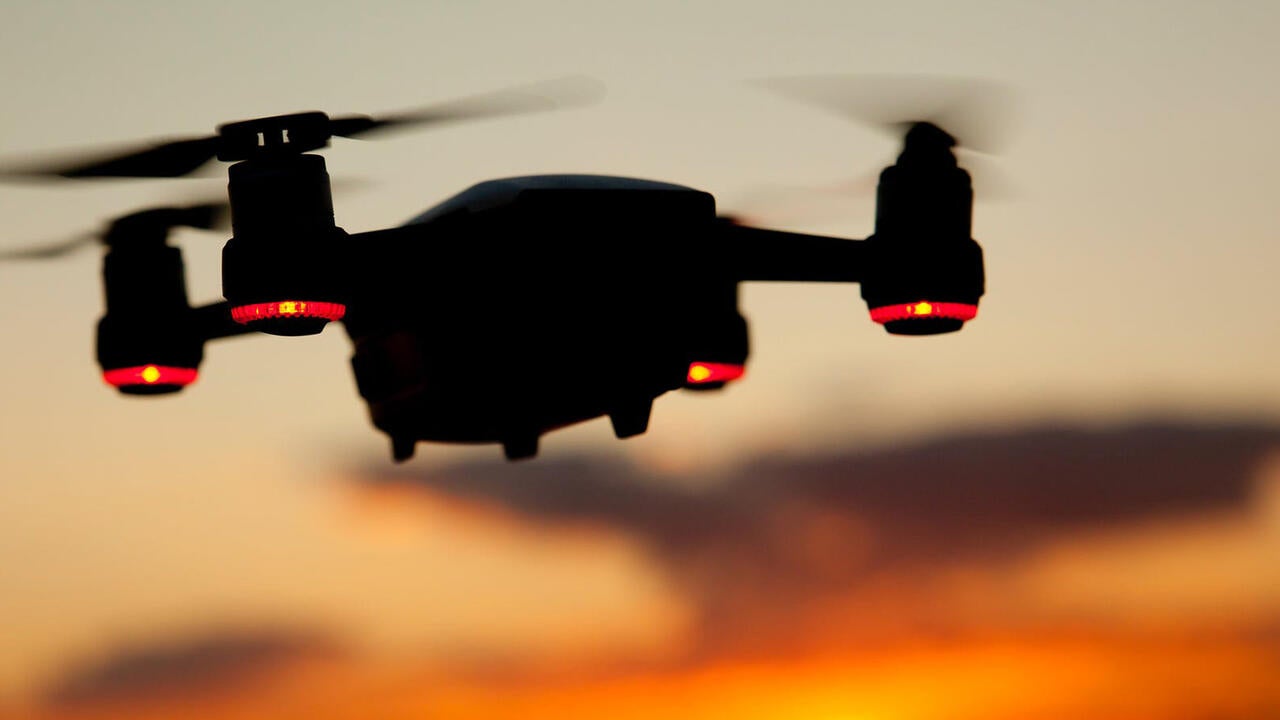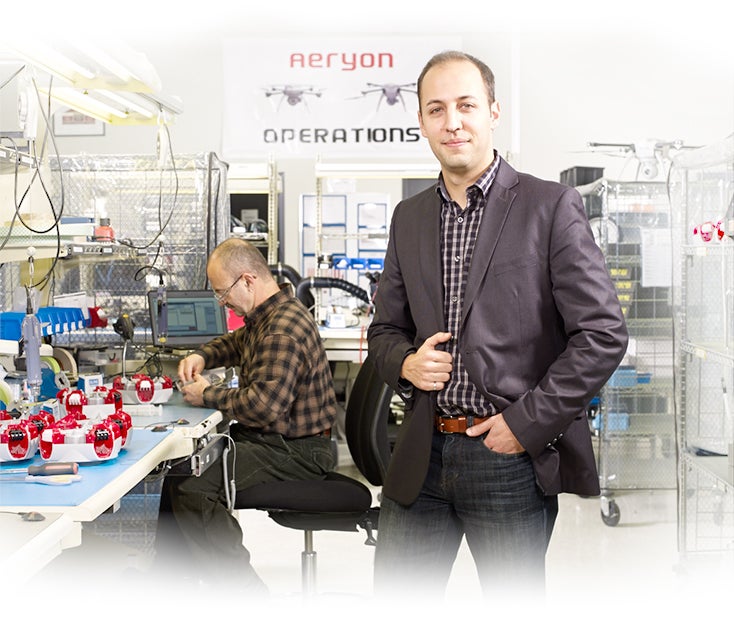
All-weather drones are eyes in the sky during disasters
A product that can fly in the hot, the cold, the rain, the snow, the dust, the dirt

A product that can fly in the hot, the cold, the rain, the snow, the dust, the dirt
By Julie Stauffer Faculty of EngineeringWhen a 7.8-magnitute earthquake hit Nepal in April 2015 Aeryon Labs Inc. provided aerial support to disaster relief teams on the ground. In 2014 when Typhoon Hagupit hammered the eastern Philippines, it ripped up trees, overturned buildings, flooded roads and forced thousands of people to flee their ruined homes. To deliver aid, relief organizations first had to navigate the chaos. That’s why Toronto’s GlobalMedic turned to drone technology from Aeryon Labs Inc. to map out the worst-hit areas, pinpointing where help was needed most.
It’s just one of the many applications for the company’s all-weather drones that are currently flying high in six of the world’s seven continents.

Aeryon Labs was founded by Waterloo Engineering graduates David Kroetsch, Mike Peasgood and Steffen Lindner in 2007, but the company’s roots go back even further. As a first-year engineering student, Kroetsch formed the Waterloo Aerial Robotics Group to feed his passion for unmanned vehicles.
After a handful of stints with startups during co-op terms and after graduation with a BASc in computer engineering, Kroetsch returned to that passion — and to the University of Waterloo — to complete a master’s degree in mechanical engineering. Attracted by the University’s “own what you invent” intellectual property policy, he set out to build the technology that underpins Aeryon Labs.
Today, the company boasts 75 employees, a 40,000-square-foot high-tech facility and no shortage of customers. Aeryon has racked up revenue growth of 100 per cent a year over the past four years and earned Ontario’s Exporter of the Year award in 2014. It’s Waterloo location gives the company access to top manufacturing and engineering talent, including many University of Waterloo co-op students and graduates.
Kroetsch acknowledges that Aeryon faces a lot more competition these days. Walk into your closest Best Buy or Canadian Tire store and you can take home your very own drone for less than $100.
So why are customers, like the Ontario Provincial Police (OPP), the U.S. Coast Guard and British Petroleum spending $60,000 –$120,000 for an Aeryon machine? Functionality, says Kroetsch. “We’ve built a product that can fly in the hot, the cold, the rain, the snow, the dust, the dirt. We work all the way from minus 30 Celsius arctic temperatures to plus 50 Celsius desert operations.”
On top of that, the systems are easy to operate, even in finger-freezing temperatures when taking gloves off just isn’t an option.
So when the community of Nome, Alaska, missed its last scheduled fuel delivery because of an ice storm, the convoy that came to the rescue used an Aeryon sUAS to plot a safe route through the frozen waters.
And when an accident shuts down Highway 401, the OPP use Aeryon drones to take detailed images of the scene. This allows the police to gather data in 15 minutes rather than the two hours it generally takes with other technologies on the ground. The end result is good news for motorists with traffic starting to flow faster than is possible with other means of data collection.
Around the world, Aeryon’s systems have been used to estimate sea lion populations in the Bering Sea, help Libyan rebels overthrow dictator Moammar Gadhafi, monitor oil spills in the Gulf of Mexico and more.
Looking forward, Kroetsch sees blue skies for Aeryon Labs. “In 2007 no one knew what a drone was,” he says. “Now it’s a matter of bringing that capability beyond the early adopters.”

“We’ve built a product that can fly in the hot, the cold, the rain, the snow, the dust, the dirt. We work all the way from minus 30 Celsius arctic temperatures to plus 50 Celsius desert operations,” says CEO Dave Kroetsch.

Read more
Here are the people and events behind some of this year’s most compelling Waterloo stories

Engineering master's student Nayeema Nonta (left), one of the three paper authors, and her supervisor, Dr. Sirisha Rambhatla, in a large server room with the computer power needed to develop their new LLM training technique. (University of Waterloo)
Read more
Waterloo researchers develop highly efficient AI training system that paves the way for cheaper, greener “intelligent partners”

Read more
Engineering researchers team up to tackle the plastics pollution problem with microbial innovation and engineering design
Read
Engineering stories
Visit
Waterloo Engineering home
Contact
Waterloo Engineering
The University of Waterloo acknowledges that much of our work takes place on the traditional territory of the Neutral, Anishinaabeg, and Haudenosaunee peoples. Our main campus is situated on the Haldimand Tract, the land granted to the Six Nations that includes six miles on each side of the Grand River. Our active work toward reconciliation takes place across our campuses through research, learning, teaching, and community building, and is co-ordinated within the Office of Indigenous Relations.